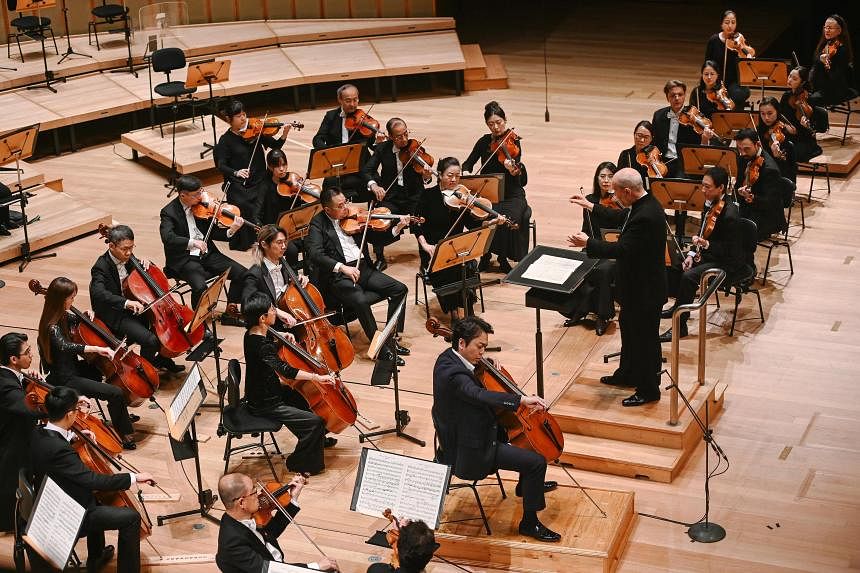Brahms requiem and Schumann Cello Concerto
Singapore Symphony Orchestra
Esplanade Concert Hall
April 20
There is good reason to couple Robert Schumann (1810-1856) and Johannes Brahms (1833-1897) in the same concert. The older German composer and his wife Clara were mentors to the young upstart, and Brahms and Clara Schumann, also a pianist and composer, maintained a passionate platonic friendship till the end of their days. The spiritual connection between their music is real, as shown in this concert led by Hans Graf.
Schumann’s Cello Concerto opened the evening, with Chinese-Australian cellist Qin Li-Wei as soloist. Composed during Schumann’s troubled late years, the concerto’s mellow and lyrical quality found an ideal advocate in Qin. Absent was outright Romantic-era virtuosity, in its place limitless song, sympathetically partnered by pared-down forces.
The brief central slow movement saw the added voice of SSO principal Ng Pei-Sian’s cello, accompanied by gentle pizzicato. The sprightly finale with accompanied cadenza provided the composer’s last flourish before his terminal descent into insanity. Qin concluded with two encores, both in G major – an ultra-smooth rarity in David Popper’s Etude (Op. 73 No. 22) and the popular Prelude from J.S. Bach’s Suite No. 1.
There is a special relationship between the Singapore Symphony Chorus (SSC) and Brahms’ masterpiece, A German Requiem. It was with this work that the chorus made its debut in 1980 under Choo Hoey’s baton, sung in English.
In this performance, Ein Deutsches Requiem was sung in its original German. SSC was augmented by juniors from Singapore Symphony Youth Choir, numbering over 100 singers. This was accompanied by SSO, boosted by thirty string players from the Singapore National Youth Orchestra.
Eschewing fire and brimstone of the Latin requiem mass, this rendition was one of comfort and solace, with texts drawn from the Lutheran bible. In the opening chorus Selig Sind, Die Da Leid Tragen (Blessed Are They That Bear Suffering), the chorus’ hushed entry, with every consonant clearly enunciated, provided a measure of the excellence to come.
The chorus sang in all seven movements, with no break in between. They held their own in big choral fugues, notably in the second movement Denn Alles Fleisch Es Ist Wie Gras (All Flesh Is As Grass) and the penultimate Denn Wir Haben Hie Keine Bleibende Statt (For Here We Have No Continuing City), known for being particularly taxing. Kudos to choral directors Eudenice Palaruan and Wong Lai Foon for their sterling work.
Both vocal soloists were also excellent. Danish baritone Bo Skovhus’ throaty delivery of Herr, Lehre Doch Mich (Lord, Make Me To Know Mine End) and Siehe, Ich Sage Euch Ein Geheimnis (Behold, I Show You A Mystery) had a special resonance. Swedish soprano Susanna Andersson sang in one movement, Ich Habt Nun Traurigkeit (And Ye Now Therefore Have Sorrow), which was beauty itself.
By the final chorus Selig Sind Die Toten (Blessed Are The Dead), the message was that one need not face mortality with trepidation, but instead celebrate the triumph of having lived.

